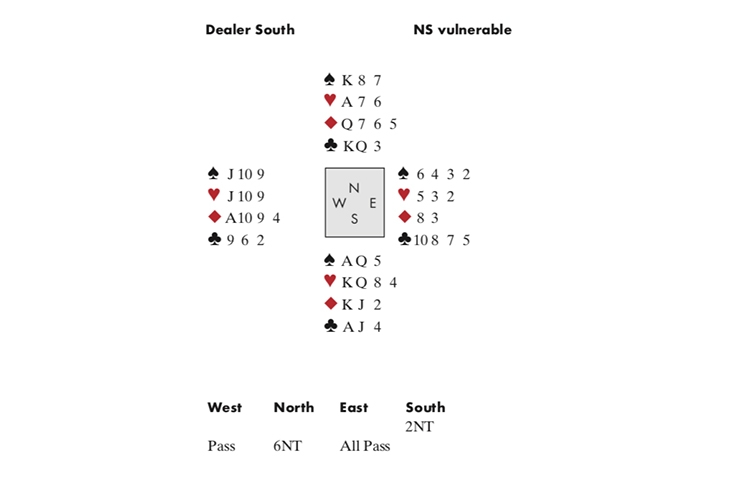‘Table presence’ is a funny old expression. It sounds as though it refers to a player’s magnetic appeal or domineering personality. But no, it’s more like an extraordinary presence of mind. And it’s about the highest compliment you can pay someone. The Official Encyclopaedia of Bridge has made a valiant attempt to define the term, stating it denotes: ‘instinct’, ‘the drawing of correct inferences from any departure of rhythm by the opponents’, ‘the ability to coax maximum performance from partner’, a ‘poised demeanour that does not give clues’, ‘discipline in the bidding’ and ‘the ability to make the opponents feel they are facing a player of a higher order’. Bring it on!
Some legendary players have been famed for their table presence. One such was the late great John Collings. Here he is in action (see image).
West led the ♠J. Collings won in dummy and played a diamond to the ◆K and West’s ◆A. West continued spades. Collings won, then cashed his third spade, three clubs, and the ♥K and ♥A. On these, West played the ♥9 and ♥J. Next Collings cashed the ◆J and ◆Q, East discarding the 13th spade.
Collings was now in dummy, with ◆7♥7 opposite ♥Q8. He had a choice of going with the ‘principle of restricted choice’, which indicated finessing, or playing for hearts to be 3-3. He confidently played a heart to the ♥Q, and the slam rolled home. Why did he not finesse? Because, he explained, West had paused slightly before his opening lead. If he had held ♠J109 and ♥J9 he would have led the ♠J like a shot; the reason he hesitated must be that he held J109 in two suits!






Comments